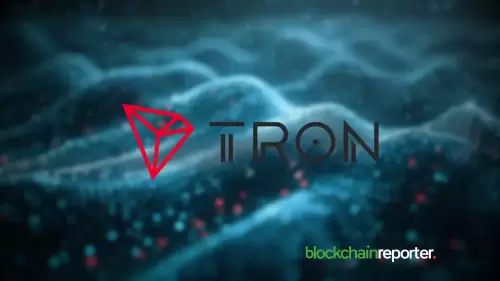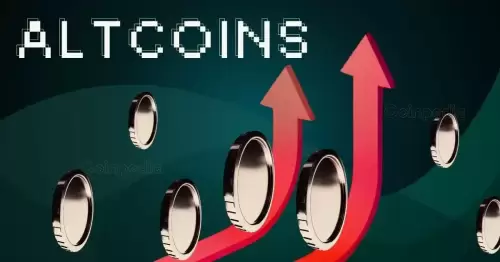 |
|
 |
|
 |
|
 |
|
 |
|
 |
|
 |
|
 |
|
 |
|
 |
|
 |
|
 |
|
 |
|
 |
|
 |
|
Cryptocurrency News Articles
Bitcoin [BTC] breached $110,000 on the 22nd of May, but the blockchain activity tells a different story.
May 26, 2025 at 05:00 pm
While Bitcoin's price dominates headlines, its on-chain activity has quietly dropped to record lows, highlighting a gap between valuation and actual usage.
![Bitcoin [BTC] breached $110,000 on the 22nd of May, but the blockchain activity tells a different story. Bitcoin [BTC] breached $110,000 on the 22nd of May, but the blockchain activity tells a different story.](/uploads/2025/05/26/cryptocurrencies-news/articles/bitcoin-btc-breached-nd-blockchain-activity-tells-story/68344595740c8_middle_800_480.webp)
Bitcoin's price action may be grabbing headlines, but its on-chain activity is signaling a different narrative.
As reported by Alphractal, this divergence is highlighting a gap between valuation and actual usage.
While BTC has breached the $110,000 mark, its on-chain activity has quietly dropped to record lows.
This shift is showcasing the evolving role of Bitcoin. It's moving away from its role as a peer-to-peer currency for daily transactions and is solidifying itself as a high-value store of wealth, with users gravitating towards centralized exchanges (CEXs) and cheaper networks.
Is this the final confirmation that Bitcoin has become digital gold in function, not just in name?
Mean transaction diverge from bullish narrative
Mean transaction fees are currently hovering around $1.50, which is an anomaly in the context of previous bull markets.
As the chart highlights, past rallies in 2017, 2021, and late 2023 saw mean fees surging to new highs, at times going over $60 and even past $120, due to memory pool (mempool) congestion and the frenzied on-chain speculation that accompanies bull markets.
However, this cycle has seen the mempool remaining calm throughout May with minimal to no persistent mempool pressure or transaction fee spikes, despite Bitcoin’s surging price action towards new all-time highs.
This pattern, as Alphractal notes, signals that transactional demand isn't increasing; essentially, users are either holding their assets or using centralized platforms rather than engaging in on-chain value transfer at the moment.
So where’s the frenzy?
In past bull markets, Bitcoin’s mempool would swell with tens of thousands of unconfirmed transactions, serving as a clear indicator of speculative urgency as traders engaged in heated bidding.
Yet, the current cycle, despite reaching record prices, is unfolding in a quieter fashion.
Mempool activity in 2025 is thin compared to the surges of 2017 and 2021, when transaction backlogs routinely exceeded 150,000. Today, according to Alphractal, sti ll manageable levels of congestion indicate a notable lack of urgency among users.
Essentially, traders are increasingly engaging in a manner that sidelines the base layer for speculation, opting instead for faster, cheaper transactional alternatives on centralized exchanges, or they are simply accumulating and holding their coins.
This behavior is having a direct impact on the Bitcoin network itself, which isn't necessarily reflecting the hype that's building in the broader markets.
Is this the final confirmation that Bitcoin has become digital gold in function, not just in name?
SegWit adoption soars as 'retail' usage drops?
The data also highlighted a massive shift in SegWit adoption since 2021, with SegWit transactions now overwhelmingly dominating the Bitcoin blockchain.
This shift has been attributed to improving block space efficiency, reducing fees and enabling smoother throughput for transactions on the Bitcoin network.
However, the dominance of SegWit transactions today may be presenting a double-edged sword, Alphractal noted.
On one hand, it reflects optimization, with fewer bytes being used per transaction. But on the other hand, the relative absence of non-SegWit transactions may be indicating a drop in more casual or legacy users who aren't necessarily keeping up with the latest technology trends.
This analysis suggests that Bitcoin's current usage profile seems skewed toward high-efficiency, perhaps institutional-scale transactions, rather than the grassroots, everyday traffic that would typically clog the network during retail-driven surges.
Where is the activity going then?
Centralized exchanges are now handling most transaction flows, while networks like TRON are taking the lead in retail and stablecoin transfers - especially USDT - due to low fees and instant finality.
Meanwhile, Lightning Network adoption for everyday peer-to-peer payments seems to be slowing down, which might be linked to user interface (UI)/user experience (UX) challenges and limited liquidity.
As the crypto industry continues to evolve, users appear to be showing a preference for centralized or highly optimized systems for routine transactions, Alphractal concluded.
Disclaimer:info@kdj.com
The information provided is not trading advice. kdj.com does not assume any responsibility for any investments made based on the information provided in this article. Cryptocurrencies are highly volatile and it is highly recommended that you invest with caution after thorough research!
If you believe that the content used on this website infringes your copyright, please contact us immediately (info@kdj.com) and we will delete it promptly.





























































